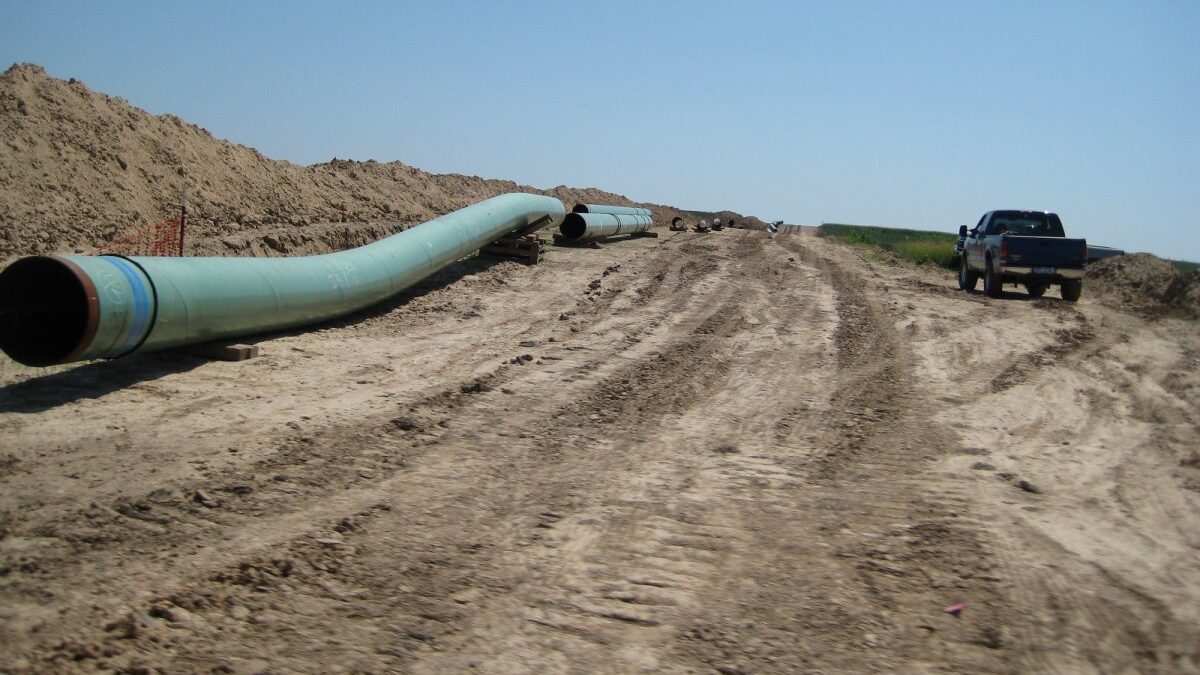
The best beer in Chicago isn’t even from Chicago. It’s in the suburb of Lyons, Illinois, about 15 miles west of the Loop. BuckleDown Brewing is like many new microbreweries, nestled in a repurposed building in a mixed residential and industrial area. Driving there from the city entails a trip through Chicagoland, from densely packed buildings downtown to single-family homes at the outskirts to houses with yards in Lyons.
Then there is BuckleDown, tucked between train tracks, a warehouse, the highway, and an industrial wasteland. The brewery itself takes up what used to be an auto body shop. It’s cozy in the winter and airy in the summer, always with a tinge of industriality behind it. And the beer is really, really good.
One hundred and twenty miles away in rural Watervliet, Michigan (population: 1,735) is Arclight Brewing. Where BuckleDown embodies the Midwest blue-collar, industrial feel, Arclight brings city living to the countryside. It too occupies the space of a former garage, complete with a large bar, indoor picnic table seating, and enough space left over to brew beer for the masses.
The floor and bar are cement, there’s a bocce court in the back for open use, and board games are provided for children and adults alike. From the inside, it’s easy to forget its location — Arclight feels transplanted out of a city — but the fields and lakes of Michigan are never far away: the building sits on the edge of Main Street and borders an empty field.
Arclight and Buckledown have been open for less than two years, and they are just two of some 4,000 microbreweries operating in the United States. That number has been growing in recent years (there was a 33 percent increase between 2013 and 2014 alone), and this year surpassed the historical high-water mark of 4,131 active breweries, which was set in 1873. Craft beer is exploding in America. But why? And what does the future hold for American beer?
‘Work Hard. Make Great Beer’
BuckleDown “ended up out here in Lyons because we heard some horror stories of getting started up [in Chicago]. Just the legalities and logistics. And we had some friends building breweries, and it took them over two years to get started.”
I was talking to Sean Mahoney, the co-founder of BuckleDown. It was mid-summer, as hot and muggy as Midwestern summers are prone to get, and we were sitting at the bar, enjoying some cold beer from the tap and talking about his business. I had asked him how and why BuckleDown landed in Lyons, of all places, a Chicago suburb not known for much besides being close to the city.
“There weren’t a lot of breweries in this area. They were in Chicago proper, and way out further west in Naperville and Warrenville,” he explained. He’s right. Two larger and well-known breweries are “out west”: Solemn Oath Brewery is in Naperville and Two Brothers Brewing Company is in Warrenville. Both are more than 30 miles from the Loop.
When BuckleDown was established, as Sean pointed out, there weren’t many craft breweries within that 30-mile stretch: “So we just thought this was a nice corridor. It wasn’t that far from the city… it’s right by highways, so it’s great for our distributor. Plus this place is kinda cool.”
The taproom retains the garage door and cement floors from the auto body (with BuckleDown’s logo on it, of course). The bar is polished wood and the stools are of yellow metal. But the ceiling is the best part: barrel truss, original to the property, and, as Sean says, it “kinda fit the aesthetic and ethos that we live by.” That ethos is “Work with your hands. Work hard. Make great beer.” Everything about BuckleDown pays tribute to that.

The Craft Beer Distinction
BuckleDown’s story combines two of America’s best pastimes: beer and business. Sean Mahoney and Ike Orcutt opened the business in December 2013 after about a year of development. Sean runs the business and marketing side of things; Ike brews.
“We were both homebrewers, but Ike is really the mastermind behind the recipes,” Sean told me. They collaborate on the beers when they’re developing one, but beyond that, Ike is the head brewer. Their beers span the spectrum of microbrew: Fiddlesticks (Belgian-style IPA), Shady Aftermath (robust Porter), Stompbox (American Imperial Stout), Knowitall (Belgian-style Witbier), and their flagship: the Belt and Suspenders IPA.

Except for new or specialty breweries, most places have a similar offering. Despite the identical styles — Belgian, Porter, IPA — no two beers are the same. What is craft beer, exactly, and what defines the different types of beers?
The Brewers Association defines craft beer not necessarily by what it’s made of, but by who makes it. Thus, a craft brewer is “small, independent and traditional.” Craft beer “is generally made with traditional ingredients like malted barley; interesting and sometimes non-traditional ingredients are often added for distinctiveness.” To learn more about the differences between beer styles, reference BeerAdvocate, a one-stop shop for microbrewery enthusiasts.
The variety of tastes is at least part of the reason craft beer is exploding in America. Belt and Suspenders, for example, has a golden honey-like hue that is neither too watery nor too thick. It tastes as it looks, with the right balance of grain, hops, and citrus, which gives it the bitter taste associated with IPAs. It’s sweet without being overwhelming and just bitter enough to make you come back for more.
A Different Vision of Success
A beer like that is good on its own, but with the proliferation of craft beer, it gets buried—in a good way. Sitting on the shelf at Binny’s (a popular Chicagoland liquor chain), Belt and Suspenders fades into an ocean of craft beer, all with similar styles but vastly different tastes. BuckleDown’s IPA tastes very different from Miskatonic’s, which tastes different from Urban Legend’s, which tastes different from Penrose’s, and so on.
And those are just IPAs. Breweries typically produce a number of staple beers, such as Belgians and stouts, and cycle through experimental brews to test their popularity. Extrapolate that out to the number of breweries popping up, and there are literally thousands of beers being produced —all with a different taste.
That being said, taste is only one side of the craft beer explosion. Brewers Association Director Paul Gatza listed a few more reasons behind the popularity: experimentation by consumers and brewers, more stores carrying it, the social aspect, and the portability of the good stuff. For the most part, Gatza is correct — but not completely.
Of course, the market expanding in the ways Gatza describes has been integral to its success. Craft beer is undergoing a snowball effect. It long ago reached the tipping point from being a niche hobby for dedicated home brewers to mainstream enough to break a 142-year-old record. So far, craft beer’s past success has been fueling its future gains, and there’s no end in sight.
Yet despite craft beer’s tremendous growth, the purpose of most microbreweries isn’t to become the next Miller or Budweiser. Microbreweries are micro for more reasons than their beer: they’re micro geographically, too. Market domination isn’t on the minds of most brewmasters, because the only market they’re interested in dominating is the one in their backyard.
The Brewer’s Association notes that 75 percent of American adults over 21 live within 10 miles of a local brewery. In hard numbers, that’s 231.6 million Americans who have a brewery nearby. Nowhere is this exemplified more than by Arclight Brewing. Nestled in a town of 1,700 people, it’s proof that a small brewery can have a big impact, no matter its location.
From Family Hobby to Small Business
Driving into Watervliet, Michigan, is simultaneously exciting, boring, and depressing. Main Street has some homey restaurants (like La Chula, the Mexican eatery), several banks, and, off by the highway, a hotel, Taco Bell, and a Burger King. But the town has fallen on hard times, especially after the paper mill closed in 1994, and with it most of Watervliet’s industry. About a mile from the Watervliet exit on Interstate 94, at the end of the commercial stretch of Main Street, sits Arclight Brewing Company.

Arclight’s property is huge and would be the envy of any urban or suburban brewery. Like BuckleDown, the building was converted from an auto body shop and retained some of those elements that give it an edge. The giant overhead doors, remains from the old shop, are still put to good use: in the summer they’re open wide to welcome a crowd, which sometimes spills onto the small front patio. In the winter the doors are closed but allow in a generous amount of natural light. Large floor space, large brew space, and good beer makes for a successful brewery — even if it’s in rural Michigan.
Ed Nash, Arclight’s head brewer, opened the brewery with a partner in July 2014 after home brewing beer for a number of years. “I was first exposed to it [beer] in the late ‘70s because my dad brewed homebrew. We also made root beer and cherry soda, and wine as well, so we were exposed to the fermentation process as kids. Of course, I can remember drinking this beer and it was pretty rough.”
That changed later in life. “I had a girlfriend who said ‘You need a hobby,’” Ed recounted to me, “and she was telling me her ex-boyfriend brewed beer and so I thought ‘I can do that.’” Home brewing was the first step — which he did upwards of twice a week in his Chicago apartment — and which lead to membership in C.H.A.O.S., the Chicago Homebrew Alchemists of Suds, a one-of-a-kind homebrew collective. Successful brews in C.H.A.O.S. led to recognition and interest from investors, one of whom became his business partner.
Watering the Desert
Why Watervliet? The location is far from a major city, without industry, and in the midst of tough economic times — not the ideal for an urban microbrewery. However, Ed listed a number of good reasons for Arclight to make its home there. One is that Ed has roots in Watervliet: he was born across the street from the brewery.
But also: “southwest Michigan is beautiful. It’s known as the fruitbelt, so there’s fresh fruit available for brewing [beer], and of course wine.” Napa Valley may have the fame, but Michigan wine is not uncommon in the state and the Midwest. Fruit, too, is in high supply. According to the U.S. Department of Agriculture, Michigan produced approximately 7.9 percent of total U.S. harvests.
Furthermore, despite Watervliet’s location, it’s still in a good spot to draw business. “We have a pretty good summer crowd here,” Ed noted. “Chicago people come to Paw Paw Lake, so it works out very well. Plus, we’re right where the highway splits, so people going up to Founders or Bell’s in Kalamazoo, or Detroit, we’re in a perfect location for them.” With good property and traffic, along with the quality of the beer, Arclight has positioned itself to be a successful business in an unlikely location.

Microbreweries like Arclight succeed for the same reasons that many people — both inside and outside the industry — think they’ll fail. They turn their locations into assets, their small markets work to their advantage, and their product is (for many people) superior to beers like those from Miller or Budweiser.
The Growth Quandary
As the craft beer industry grows and acquires more market share — which now stands at 11 percent — the pressure grows to either retain autonomy and face potential difficulties in distribution and scaling, or partner with a market leader to get in more stores, faster. Case in point: The New York Times recently published an article outlining the concerns of small breweries competing with companies like AB Inbev and SABMiller, both of which have been acquiring smaller, independent brewers.
Both options carry risks. Partnering with a beer giant can get a small brewery national or international recognition, but at the cost of losing fans upset about what they see as selling out. Beer is not the only industry susceptible to backlash over business decisions. The Chicago-based coffee chain Intelligentsia recently sold a majority stake to Peet’s Coffee, prompting major backlash from longtime patrons and competing cafes. If a brewery decides to stay small, it may build a loyal following, but also might not attain the distribution —or production — it wants.
Another Chicago brewery and craft beer pioneer exemplifies the tightrope expanding breweries have to walk. John Hall started Goose Island Brewery in 1988. At the time, there were only about 200 craft breweries in the United States. Over time, Goose Island made a name for itself and slowly expanded the brand.
Regional distribution was a given, and national distribution was becoming a reality. But despite its upstart success as an early microbrewery, Goose Island couldn’t keep up with the demand that came with its success, and was forced to halt production on some of its beers.
In 2006, the company partnered with Widmer Brewing Company, an Anheuser-Busch affiliate based in Portland, Oregon, which gave it a West Coast distribution point. Then, in 2011, it sold a majority stake (58 percent) directly to Anheuser-Busch, which also purchased the remaining 42 percent stake owned by the Craft Brew Alliance, a publicly traded beer conglomerate. By this time, Goose Island had ceded enough ownership to third-party investors that it ceased to be considered a craft brewery as defined by the Brewers Association (not affiliated with the Craft Brew Alliance).
Despite losing its label as a craft brewer, Goose Island came out ahead in the numbers game: a year and a half after the Anheuser-Busch acquisition, some of Goose Island’s most popular beer became available in all 50 states. Distribution was also up 70 percent from 2013 through the fourth quarter of 2014. The brewery has not been without its detractors, especially Chicagoans who saw it grow from a hometown favorite to a nationally recognized brand backed by a beer monolith. But with production, distribution, and sales all up, it can be hard to argue with its decisions.
Such is the dilemma small but popular breweries face: partner and grow, or go it alone. But while Goose Island’s story makes for a good case study, the issues it encountered are not as wide a concern as many observers think. The number of upstart-turned-giant microbreweries is small relative to the number of microbreweries generally, and despite acquisitions by market leaders, the craft beer sector continues to grow — and with it, the amount of market share it controls.
Mergers and acquisitions are certainly issues, especially for explosively growing breweries. But for breweries focused more on their neighbors and less on their countrymen, the closest encounter with AB InBev or SABMiller is at the grocery store, not a boardroom. Overexpansion and oversaturation certainly weren’t on the minds of Sean Mahoney or Ed Nash.
Has The Craft Beer Market Peaked?
Should oversaturation of the market be a concern? Despite the allure of craft beer and its slow-but-steady market share gain, there can still be too much of a good thing. When taste matters as much as it does, thousands of breweries producing similar beers can start to detract from the market.
That’s why some breweries, like Pipeworks Brewing Company, try to stand out from the pack with outlandish beer names and colorful labels. When taste and atmosphere start to blend together, differentiation becomes harder. Hence beers like Blood of the Unicorn, a “hoppy red ale.”
Sean and Ed see things differently in this respect. Craft beer may be going through a renaissance, but there’s still a lot of room to grow. “I do believe that there will be a shakeout, but it’s not going to happen for a while,” Sean told me. “There’s some private investment and private equity that’s kinda looking at this as a hot market and saying ‘Oh, I’m going to throw some money at it,’ or ‘I’m going to start the business plan and I have a bunch of money and I’m going to get the tanks and all I need to do is find a brewer.’ Those types of businesses will struggle if they don’t care about the beer and the recipes and the quality,” he concluded.
Such an event occurred in the late 1990s, culminating in more breweries closing than opening in 1999, with the net amount of breweries expanding by two between 1999 and 2000.
On the other hand, Sean is “happy to see a lot of breweries come online and have it all shake out. Then what you’re left with is a great set of breweries and beers and that’s good for the industry.”
Ed’s dad joked that “it’s going to be like it was before Prohibition where there was a brewery in every town,” Ed said. “There’s plenty more room for growth, and if you can produce a good product you’re going to do pretty well.”
High Demand Can Challenge Quality
Analysis from the Brewers Association supports these assessments. Craft beer has been growing steadily over the past decade. Still, concerns rise over quality given the high demand and high production breweries have been forced to undertake.
Pipeworks, for example, has been so successful that it was forced to expand its production facility after its original location maxed out at 1,750 barrels of beer just three years after opening (one barrel equates to about two kegs). The brewery will christen its new facility by brewing 6,000 barrels, although it can handle more.
Despite its wild success, Pipeworks is trying to insulate itself from overexpansion, market saturation, and low-quality beers by constraining production. Too much beer too fast could impact quality; too little beer could turn away customers and hurt demand.
Pipeworks isn’t the only brewery with those concerns. The Boston Globe recently profiled Jack’s Abby Brewing, a Massachusetts-based brewery that exploded in popularity and production. In less than five years, it was forced to double its staff, increase production six-fold, and expand into a space 10 times the size of its original location. The business venture has so far been successful, but behind every success are warnings from the past. Not every brewery can handle newfound growth.
Pete’s Brewing Company is an oft-cited example of overexpansion, mismanagement, and eventual failure. The brewery opened in 1986 and leapt to the top of the fledgling micro-brewing industry. “Pete’s Wicked Ale,” an American Brown Ale, was its best-selling item and helped propel the company to become the second-largest microbrewery in the country by 1994. In 1998 it was acquired by the Grambrinus company and its beers were contracted out to mixed results.
But when tastes changed and brown ales evaporated, Pete’s success came to a halt: in 2011, Grambrinus discontinued the Pete’s brand. It had survived for 25 years and is still regarded as a craft beer pioneer. Ultimately, though, its popularity faded and never returned, killing the company. If Goose Island epitomizes succeeding at selling to a bigger company, Pete’s demonstrates that no success is guaranteed.
Three Takeaways from This Snapshot
The European Renaissance is considered to be the turning point between medieval and modern history. It saw the rise of beautiful art, architecture, and cultural achievements that changed the course of Western civilization. American craft beer is undergoing a similar transition.
Microbreweries everywhere are slowly chipping away at the domination of beer giants like AB InBev and SABMiller. Fifty years ago, the neighborhood tavern would have four or five beers on tap, not because they all tasted good but because that’s what was available. Now giant liquor warehouses can’t even contain all the products of the craft revolution.
What the future holds for craft beer is anyone’s guess, but there are a few certainties: One, the industry still has yet to hit its high-water mark. The data bears this out: in the four months it took to write this article, breweries broke the 142-year-old record of active breweries, which stood at 4,131. The Brewers Association now reports there are 4,144 operating breweries in America.
Second, beer innovation continues to keep the industry alive and well. While staple brews continue to be tweaked and perfected, new styles are on the horizon. Sour beers are gaining in popularity, as well as experimental brewing techniques like barrel-aged beer — something that even big brands like Jameson (yes, Jameson) are trying to cash in on.
Third, the integrity of the market is secure. Breweries like Goose Island (a success) and Pete’s (a failure) that partner with a giant distributor make up a small number of breweries compared to the whole. Nonetheless, despite some of the pressure on small brewers, their position in the market is safe from the likes of Anheuser-Busch and SABMiller.

What does the future hold for BuckleDown and Arclight? “Bringing on the cans,” Sean told me. “Since we brought the cans on there’s just been very strong demand for it. We just can’t make enough beer, which is great.” To meet demand, BuckleDown will double its fermentation capacity by bringing on three new 30-barrel fermenters. Sean also wants to expand the business into an identical space next door, and in the long run wants to acquire a bigger production facility near the original location.
Ed with Arclight has similar plans: “The first year, we wanted to see how everything was going to go so we could start planning for the future. We’ll wait for the summer to finish up and we’ll take a look at our numbers and everything and look what the demand is.”
Arclight is also interested in canning its beer to reach more customers. “We still have to distribute right now, so we’ll probably move into more commercial distribution. And, hopefully, we’ve kinda talked about opening a 50-barrel production facility,” Ed says.
This is the American Beer Renaissance, and it’s not going away any time soon.









